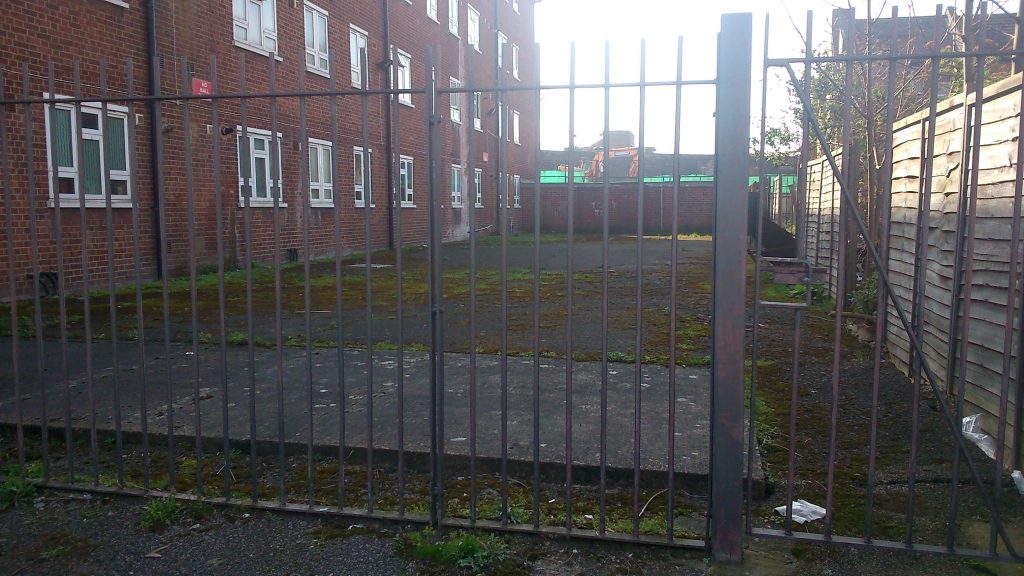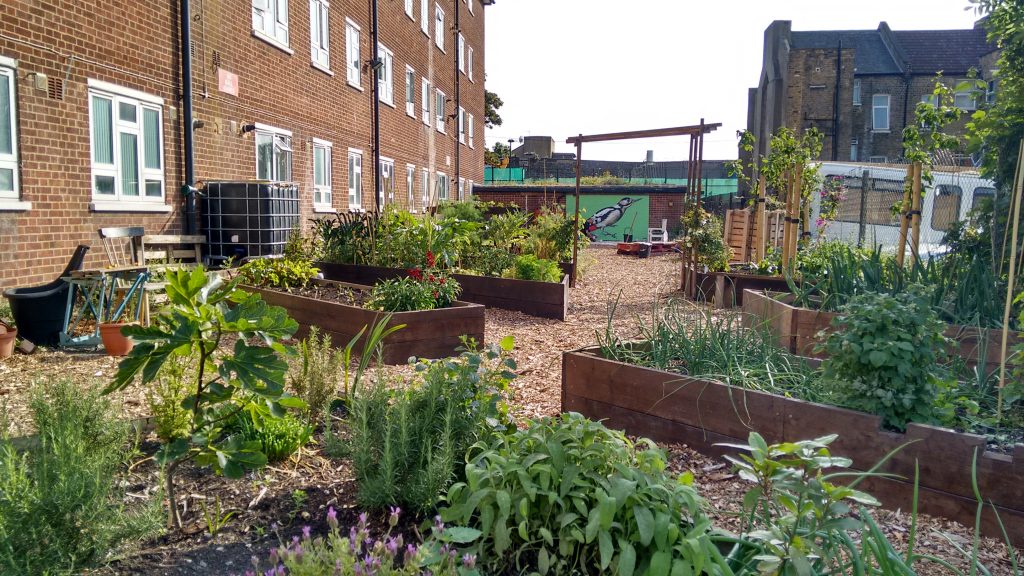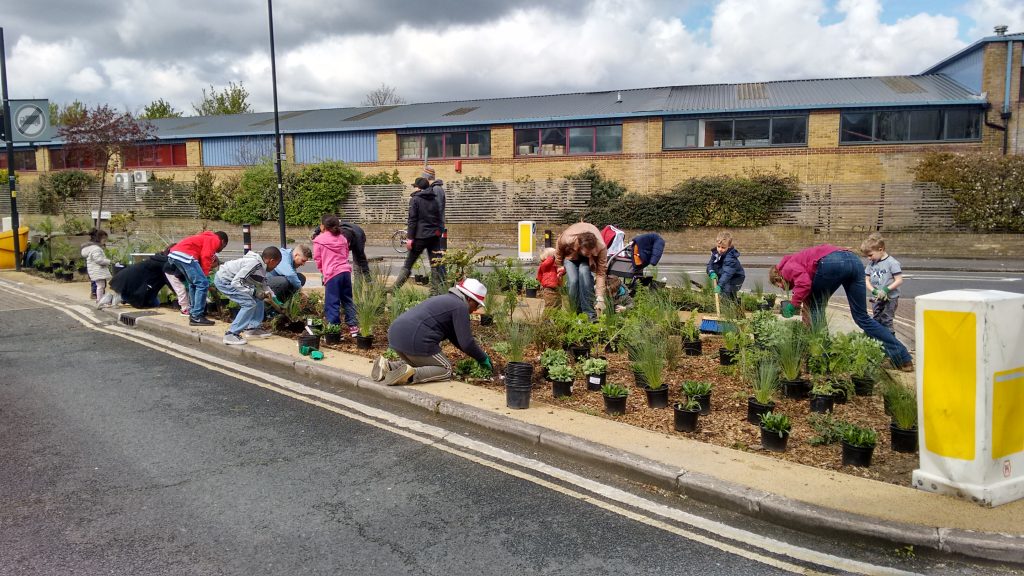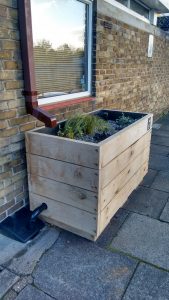Ongoing wildlife declines here in Britain and around the world are enough to stop you in your tracks. The Living Planet report released by WWF in 2016 reported that there has been a decline in all vertebrate species by 58% in the years between 1972 and 2012[1]. In other words, by the time a baby born in 1972 reached their 40th birthday, the numbers of individual birds, fish, mammals and amphibians that shared the planet with them had dropped by more than a half.
What’s more, this loss is still continuing on our doorsteps, with 57% of key British wildlife species in significant decline, including many garden favourites such as hedgehogs, sparrows and butterflies[2]. This can be attributed in part to the loss of household gardens; that are hugely important for the survival of city wildlife. Green space in gardens is being lost at a rate equivalent to two and a half Hyde Parks every year in London alone[3], replaced by a growing carpet of tarmac, paving and off-street parking spaces.

A lifeline for urban wildlife
However there is a new type of garden emerging on street corners, on shed roofs and alongside busy roads that has the potential to help reverse these declines. In the face of climate change, such gardens can help cities develop resilience to extreme weather (including flooding and droughts), as well as making them cleaner and healthier places that are full of colour and life.
Gardens that are designed to soak up and hold water are known as Sustainable Drainage Systems (SuDS) – a logical and far-reaching concept that will hopefully become more well-known over the coming years. These gardens are designed to hold more water than normal gardens, usually by adding layers of gravel and sandy soil, allowing more water to soak into the soil. They look just like ordinary gardens and can be planted up with all sorts of plants and flowers; they are both practical and beautiful!
What’s it all about?
It all comes down to the simple concept of letting rainwater soak into soil rather than running off of hard surfaces. By creating a patchwork of sponge-like green spaces across London, water is captured and used by plants, rather than cascading off rooftops and roads into the nearest drain.
This is what London Wildlife Trust is doing through the Lost Effra project. By working closely with communities in south London to create SuDS in public spaces and on housing estates, we are making the area more resilient to climate change as well as improving neighbourhoods for people and wildlife. Check out an interactive map of all of the rain gardens, green roofs and ‘depaved’ gardens (where paving has been removed and replaced with wildlife gardens), available here.
The benefits of these spongy sponge-like gardens are significant and widespread. They reduce flood risk by reducing pressure on our outdated sewers that overflow in times of heavy rain, and they keep streets and houses cooler in summer heatwaves. They also clean the air that we breathe and improve neighbourhoods for people’s wellbeing – we all feel better walking through places with greenery[4].

If they are designed correctly, rain gardens and SuDS of all shapes and sizes have the potential to support a wide range of wildlife. They can provide a home to the nectar-loving insects like butterflies, bees and hoverflies that make food growing in the city possible by pollinating food crops. They also help garden birds by providing food in the form of tasty insects, worms and seeds.
So whether you are a city planner, weekend gardener or even someone who has never tried gardening before, we can all help to create vibrant gardens that soak up rainwater, make the city environment healthier, support wildlife and improve streets for Londoners at the same time.

Keeping rain gardens wild
Here’s a checklist of five easy things you can do to make your rain garden, green roof or the ‘depaved’ patch in your garden a haven for London’s amazing wildlife.
- Good partners: choose plants that are a good match for our wildlife – make sure that flowers have accessible pollen as many more exotic flowers have pollen that is out of reach to the bees, butterflies and other insects that we have in Britain. The Perfect for Pollinators list from the RHS is great for this, as well as the Wildlife Trust’s Wild about Gardens
- Plan for colour through the seasons: choose plants that flower at different times of year so that there is always a supply of nectar for pollinating insects. Choosing plants with long flowering seasons will also help with this.
- Go native (at least some of the time): although species not originally from Britain can still be great for certain wildlife, try to include some native species in your garden as they will support the most variety of mini-beasts, that in turn provide food for birds, bats and hedgehogs.
- Mix it up: use your rain garden to provide the most varied habitat patch possible. Have you got space for a small tree? How about including a pond? By leaving deadwood piles, stony areas and small piles of rubble you will provide for the greatest variety of wildlife – and in turn, get the best show!
- Go easy with those shears! Wildlife needs some shelter over the winter months to provide insect larvae with somewhere to pupate; shelter for flying insects from rainstorms; and frogs, toads and lizards somewhere to hunt for insects before hibernating. With this in mind, save some cutting back of grasses and perennials until spring. Also, leaving some seed heads and berries provides important winter food for garden birds.
 SuDS are gaining momentum across the city. The Greater London Authority recently launched a plan to encourage all Londoners from teachers, park managers, business owners and healthcare managers to consider including SuDS in any planned landscaping work. For more information, the London Sustainable Action Plan is available here.
SuDS are gaining momentum across the city. The Greater London Authority recently launched a plan to encourage all Londoners from teachers, park managers, business owners and healthcare managers to consider including SuDS in any planned landscaping work. For more information, the London Sustainable Action Plan is available here.
There’s is no better time to incorporate practical AND beautiful gardens into London, whilst also making them highly valuable places for our threatened wildlife. No matter how small each one is, creating a patchwork of SuDS across the city will help to create a healthier, happier and more alive place for everyone.
Helen Spring is the Lost Effra Project Coordinator for London Wildlife Trust, a scheme that works with communities in south London to create wildlife-rich gardens that soak up rainwater and make the former catchment of the ‘lost’ River Effra more resilient to climate change.
For more information please visit www.wildlondon.org.uk/lost-effra or follow the project on twitter at @LostEffra. For more information about SuDS please also see www.susdrain.org.
[1] WWF, 2016. The Living Planet Report
[2] RSPB, 2016. The State of Nature Report
[3] London Wildlife Trust, GiGL and the GLA, 2010.
[4] The Wildlife Trusts, 2015.
